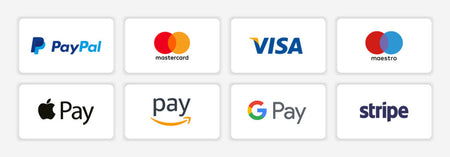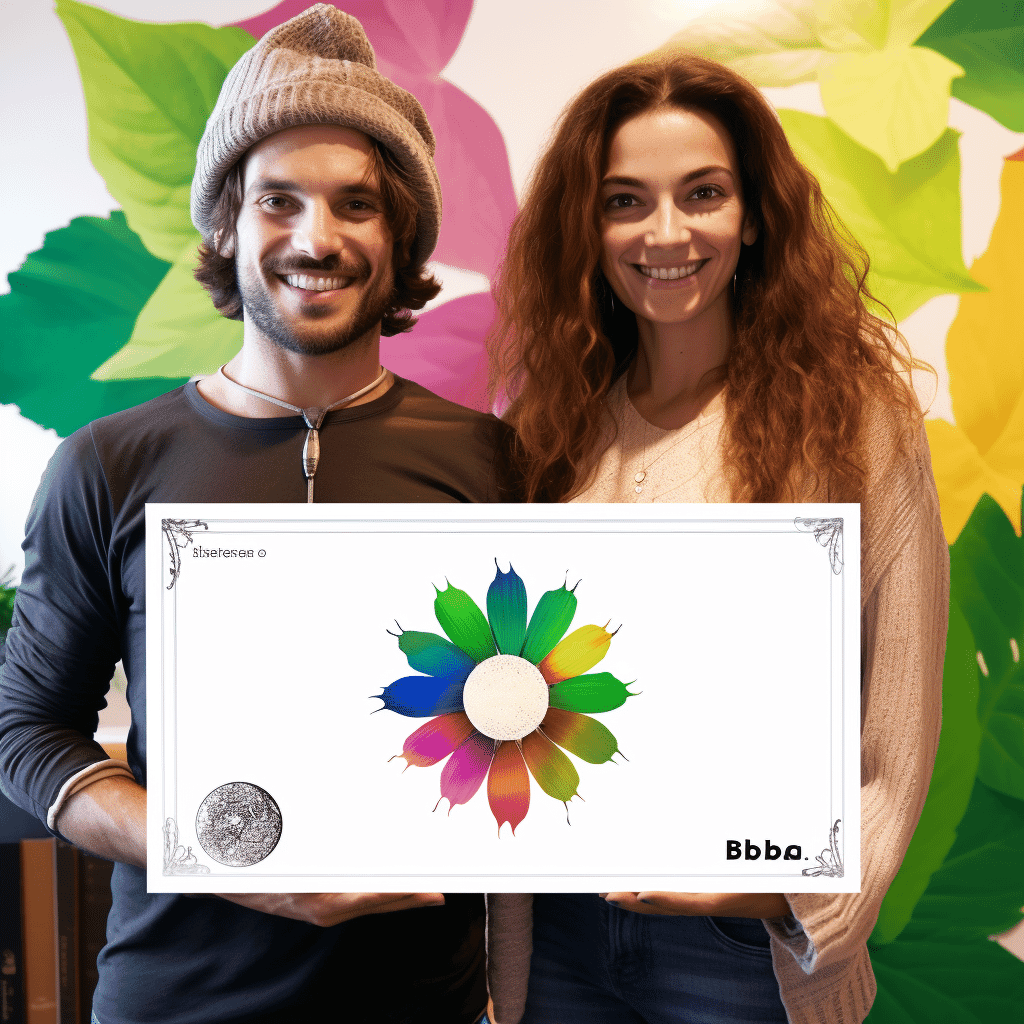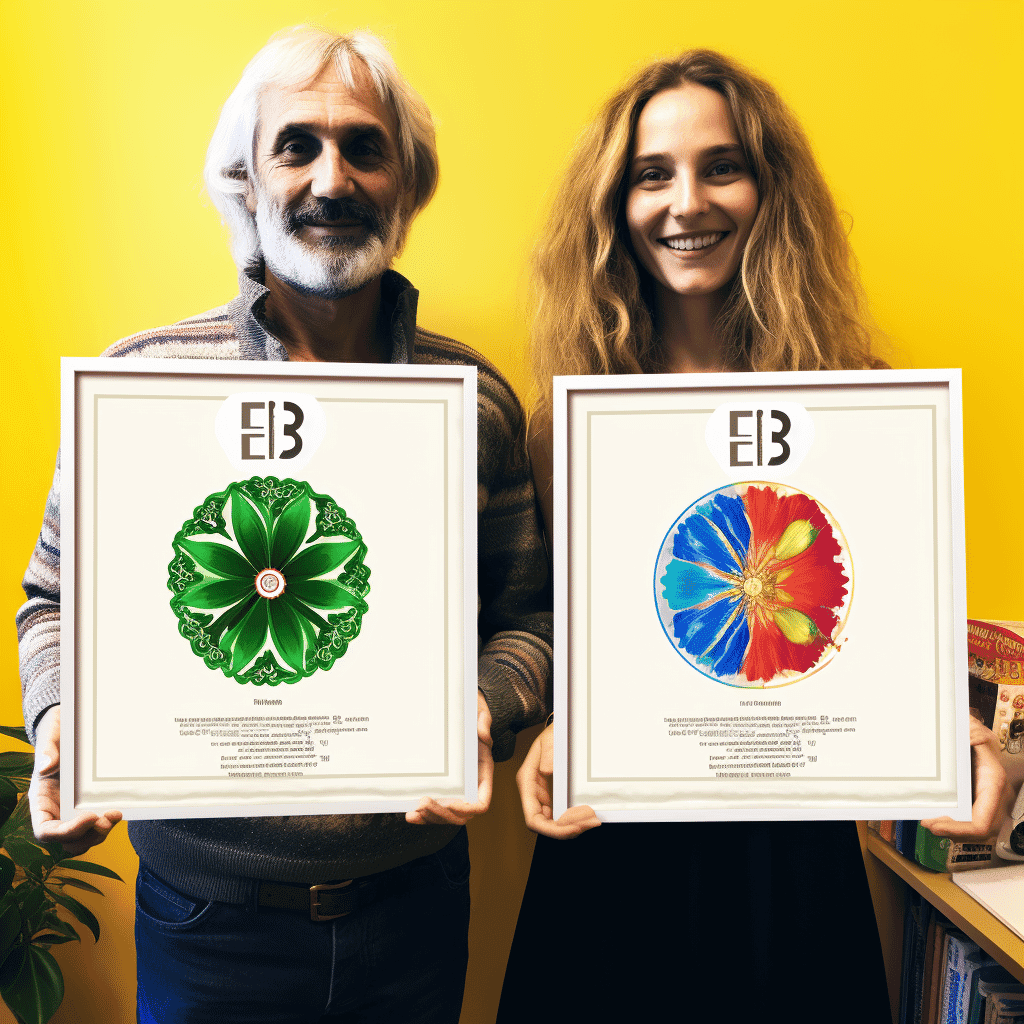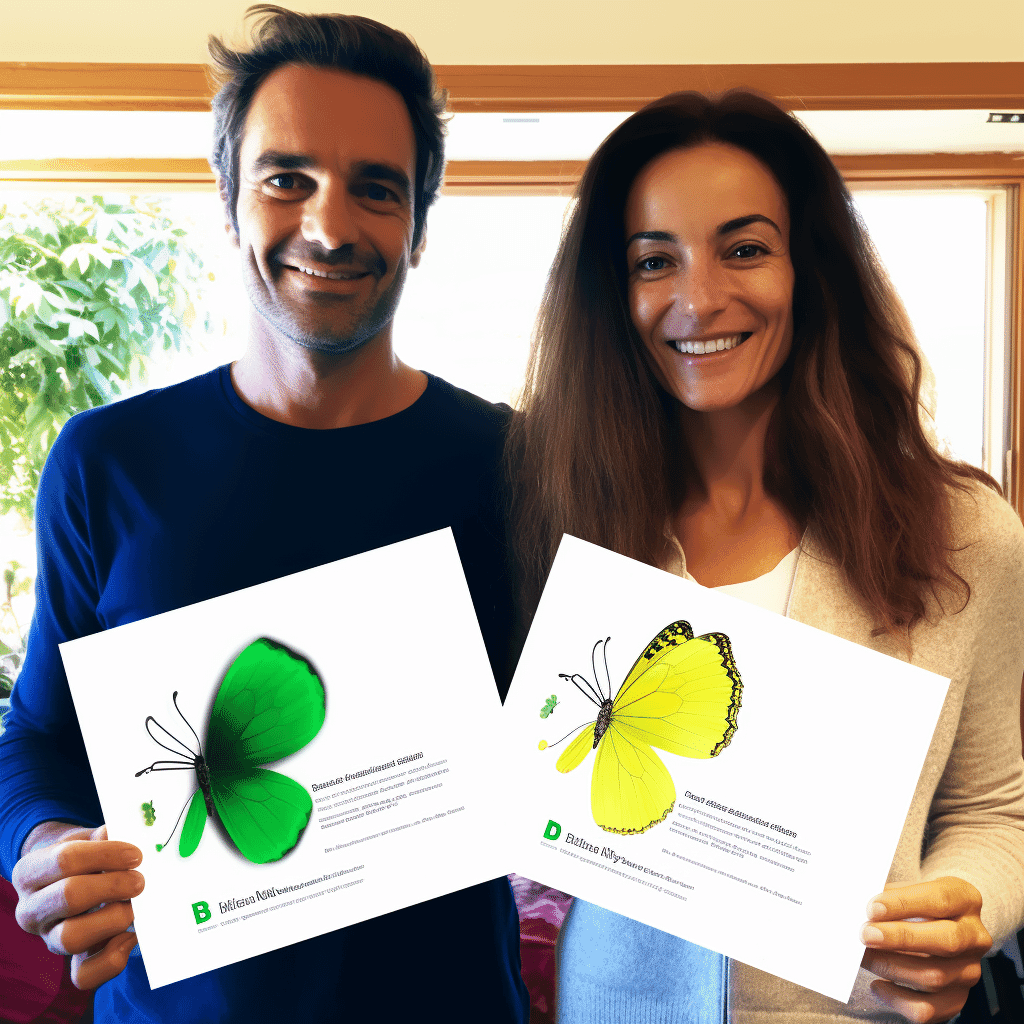Descrição
How to Create an Online Course Platform
Introduction
Welcome to our blog on how to create an online course platform! In this article, we will explore the essential elements of developing a successful distance learning platform.
What is an online course platform?
An online course platform is a virtual environment where you can make educational content available, interact with students, and track their progress. It allows people from different locations to access courses and training in a flexible and convenient way.
Step 1: Define the objective of your course
Before you start developing your platform, it is important to define what the objective of your course will be. Ask yourself: what knowledge or skill do I want to impart to students? This will help guide the entire creation process.
Step 2: Choose a learning platform
There are several learning platform options available on the market. Do your research and choose the one that best meets your needs. Make sure it offers features such as content management, student interaction, and progress tracking.
Step 3: Organize your course content
Organize your course content in a logical and structured way. Use headings (
) and subheadings (
) to make it easier for students to navigate. Also use the element to highlight important information.
Step 4: Create interactive activities
An online course platform should offer interactive activities to engage students. Use the
element to create lists of activities and the - element for each item in the list. This will help make learning more dynamic and participatory.
Step 5: Use visuals
Visuals, such as images and videos, are essential to enriching the content of your course. Use the element to add captions or additional information to images. Also use the
element to create explanatory paragraphs.
Step 6: Organize information in tables
If your course involves presenting tabular data or information, use the
element to create tables. Use the element for the table header, the element for each row, and the element for the table body, the element for each row, and the element for each header cell. Use the
element for each data cell.
Conclusion
Developing an online course platform can be challenging, but by following the steps mentioned above, you will be well on your way to creating a successful distance learning platform. Remember to always look to improve and update your content, provide support to your students, and track their progress. Good luck!
How to Create an Online Course Platform
If you are thinking about creating an online course platform, you are in the right place! In this article, we will explore step by step how you can create your own distance learning platform. Let's go!
Step 1: Define your target audience
Before you start developing your platform, it is important to define who your target audience will be. This will help you focus your marketing efforts and create relevant content for your prospective students.
Step 2: Choose a Learning Platform
There are several learning platform options available on the market. Some of the most popular include Moodle, Teachable, and Thinkific. Do some research and choose the one that best fits your needs and budget.
Step 3: Create Your Content
Now it’s time to create the content for your courses. Think about the topics you want to teach and organize them into modules. Create supporting materials such as videos, presentations, and practice exercises.
Step 4: Set Up Your Platform
Once you’ve chosen your learning platform, it’s time to set it up. Customize the design to match your brand, add your content, and set up payment and course access options.
Step 5: Promote Your Platform
Now that your platform is ready, it’s time to get the word out. Utilize digital marketing strategies like SEO, social media, and email marketing to attract potential students.
Step 6: Monitor and Update Your Platform
Once your platform is up and running, it’s important to monitor its performance and make regular updates. Listen to student feedback and make continuous improvements to ensure a high-quality learning experience.
Conclusion
Building an online course platform can be an exciting and rewarding endeavor. With the right steps and marketing strategies, you can succeed in this growing market. Remember to always provide quality content and an exceptional learning experience for your students.
We hope this article was helpful to you. If you have any questions or suggestions, please leave a comment below. Good luck creating your online course platform!
- Define your target audience
- Choose a teaching platform
- Create your content
- Set up your platform
- Promote your platform
- Monitor and update your platform
Step 1: Define your target audience
Before you start developing your platform, it's important to define who your target audience will be. This will help you focus your marketing efforts and create relevant content for your prospective students.
Step 2: Choose a Learning Platform
There are several learning platform options available on the market. Some of the most popular include Moodle, Teachable, and Thinkific. Do some research and choose the one that best fits your needs and budget.
Step 3: Create Your Content
Now it’s time to create the content for your courses. Think about the topics you want to teach and organize them into modules. Create supporting materials such as videos, presentations, and practice exercises.
Step 4: Set Up Your Platform
Once you’ve chosen your learning platform, it’s time to set it up. Customize the design to match your brand, add your content, and set up payment and course access options.
Step 5: Promote your platform
Now that your platform is ready, it’s time to promote it. Use digital marketing strategies like SEO, social media, and email marketing to attract potential students.
Step 6: Monitor and update your platform
Once your platform is up and running, it’s important to monitor its performance and make regular updates. Listen to student feedback and make continuous improvements to ensure a high-quality learning experience.
We hope this article was helpful to you. If you have any questions or suggestions, please leave a comment below. Good luck creating your online course platform!
Read also:
- How to choose the best theme for your online course
- Tips for creating high-quality videos for your courses
- Digital marketing strategies to promote your online course platform
How to choose the best theme for your online course
Choosing the right theme for your online course is essential to attract students and ensure the success of your platform. a. In this article, we will share tips and strategies to help you choose the best topic for your courses.
Tips for Creating High-Quality Videos for Your Courses
Videos are an important part of any online course platform. In this article, we will share tips and techniques to help you create high-quality videos that engage your students and enhance their learning experience.
Digital Marketing Strategies to Promote Your Online Course Platform
Once your online course platform is ready, it’s time to promote it to attract students. In this article, we will explore effective digital marketing strategies that will help you reach your target audience and increase the visibility of your platform.
We hope you find these related articles useful. Happy reading!
Step
Description
1
Define your target audience
2
Choose a teaching platform
3
Create your content
4
Set up your platform
5
Promote your platform
6
Monitor and update your platform
Find more information about creating an online course platform at:
Wikipedia
Wikipedia is a reliable source of information on a variety of topics, including creating online course platforms. Visit the article on "E-learning" to find more relevant information.
Education Online Blog
The Education Online Blog is an excellent source of tips and resources for anyone looking to create an online course platform. Visit the blog to find useful articles on the subject.
Distance Learning Portal
The Distance Learning Portal is a website specialized in distance learning. There you will find valuable information on how to create and manage an online course platform.
We hope these sources are useful for you to find more information on how to create an online course platform. Happy research!
FAQ
1. How much does it cost to create an online course platform?
The cost of creating an online course platform can vary depending on the desired features and the platform chosen. It is important to research and compare the available options to find the best solution within your budget.
2. Do I need technical knowledge to create an online course platform?
While some technical knowledge is helpful, many online learning platforms are designed to be intuitive and easy to use, even for people with no programming experience. Additionally, you can enlist the help of developers or technology experts if needed.
3. How can I ensure the quality of my content?
To ensure the quality of your content, it is important to carefully plan what will be taught, create relevant and up-to-date support materials, and solicit feedback from students. Continuous improvement is essential to providing a high-quality learning experience.
4. How can I attract students to my online course platform?
There are several digital marketing strategies that you can use to attract students to your platform, such as search engine optimization search (SEO), social media, email marketing, and influencer partnerships. It’s important to know your target audience and target your marketing efforts accordingly.
5. How can I monetize my online course platform?
You can monetize your online course platform by charging for courses, offering monthly or annual subscriptions, selling support materials, or offering additional services such as personalized tutoring. Evaluate the options available and choose the one that best fits your business model.
We hope these frequently asked questions have helped clarify some common questions about creating an online course platform. If you have any further questions, please do not hesitate to contact us.
Watch the video above for more tips and insights on how to create a successful online course platform.
We hope this article was helpful to you. If you have any questions or suggestions, please leave a comment below. Good luck creating your online course platform!
What is How to Create an Online Course Platform
If you are thinking about creating an online course platform, you have come to the right place! In this article, we’ll explore all aspects involved in creating an online course platform, from defining the content to technical implementation.
Defining the course content
Before you start creating your online course platform, it’s important to define the content you’ll offer. Think about the topics you’re an expert in and that might be useful to others. Also consider market demand and areas that are trending.
An important tip is to segment your target audience. This will help you create more targeted courses and increase your platform’s chances of success. For example, if you’re a digital marketing expert, you could create specific courses for entrepreneurs, marketers, or students.
Developing the platform’s design and structure
Once you’ve defined the course content, it’s time to think about the design and structure of your platform. Good design is essential to attract and keep students engaged. Make sure the platform is intuitive and easy to navigate.
In addition, it is important to create an organized structure for the courses. Use headings (
) to divide the content into sections and use lists ( and - ) to enumerate the topics covered in each course.
Implementing the platform
Now that you have defined the content and design of your platform, it is time to implement it. There are several options available, from ready-made platforms to custom development.
A popular option is to use a learning management system (LMS), which offers specific features for creating and managing online courses. Some examples of LMS are Moodle, Canvas and Teachable.
Another option is to hire a developer to create a custom platform. In this case, it is important to ensure that the platform is responsive, that is, that it adapts to different devices, such as smartphones and tablets.
Promoting your platform
After creating your online course platform, it is time to promote it to attract students. Use SEO techniques to improve your positioning in search engines. Use the and tags to highlight relevant keywords.
In addition, take advantage of SERP features to increase the visibility of your platform. Use sitelinks to direct users to specific pages, reviews to show testimonials from satisfied students and the knowledge panel to provide additional information about your platform.
Other An efficient strategy is to create relevant content related to your topic. Use the SERP features "People also ask", "FAQ", "Top stories", "Recipes", "Find results on", "See results about" and "Related searches" to optimize your content and attract more visitors. p>
Conclusion
Creating an online course platform can be a challenge, but with planning and dedication, it is possible to achieve success. Define the content of the courses, develop the design and structure of the platform, implement it and promote it using SEO techniques and available SERP features. Good luck!
What is the best way to create an online course platform
If you are thinking about creating an online course platform, you are in the right place! In this article, we will explore the best methods and tools for creating a successful online course platform.
Why create an online course platform?
With the advancement of technology and ease of access to the internet, online courses have become an increasingly popular option for those looking to acquire knowledge and develop new skills. Furthermore, creating an online course platform can be an excellent business opportunity, allowing you to share your knowledge and earn money from it.
Step by step to create an online course platform
To create a successful online course platform, it is important to follow some fundamental steps. Let's explore each of them:
-
Define your target audience: Before you start creating your platform, it is essential to define who your target audience will be. This will help direct your content and marketing strategies.
-
Choose the best platform: There are several platform options for creating online courses. Some of the most popular include Moodle, Teachable and Thinkific. Research and choose the one that best meets your needs.
-
Create your content: Develop the content of your courses in a clear and organized way. Use resources such as videos, texts and exercises to engage your students.
-
Configure your platform: Customize your platform according to your brand's visual identity. Add information about courses, prices and payment methods.
-
Promote your platform: Use digital marketing strategies to promote your online course platform. Invest in ads, social media and partnerships with influencers.
-
Offer support to students: Be available to answer questions and offer support to your students. This will help ensure a good learning experience.
Sitelinks
Sitelinks are additional links that appear in Google search results. They help users navigate directly to specific pages on your website, such as the courses page, contact page, and registration page.
Reviews
Reviews are evaluations made by students who have already used your online course platform. They can be a powerful marketing tool, as they help to convey trust and credibility to potential students.
People also ask
The "People also ask" section in Google search results displays questions related to the topic you are searching for. It's important to optimize your content to answer these questions, as this can increase your visibility in search results.
Knowledge Panel
The knowledge panel is an information box that appears in Google search results. It displays relevant information about your online course platform, such as its description, reviews, and links to important pages.
FAQ
A frequently asked questions (FAQ) section on your online course platform can help clarify common questions students have. unos. This improves the user experience and reduces the need for individual support.
Top stories
The "Top stories" section in search results displays recent news related to the searched topic. To stand out in this section, it is important to create relevant and up-to-date content about the online course market.
Recipes
The "Recipes" section in search results is focused on cooking recipes. Although it is not directly related to creating an online course platform, it is important to understand how SERP features work in different contexts.
Find results on
The "Find results on" section in search results displays links to other websites related to the searched topic. This can be an opportunity to establish partnerships and increase the visibility of your online course platform.
See results about
The "See results about" section in search results displays links to other topics related to the subject searched. This can be an opportunity to expand your content and appeal to different audiences.
Related searches
The "Related searches" section in search results displays searches related to the subject searched. This can help identify new content opportunities and expand your SEO strategy.
In short, creating an online course platform can be an excellent business opportunity. Follow the steps mentioned in this article and take advantage of SERP features to increase the visibility and success of your platform.
What is an online course platform for and how to create one?
With the advancement of technology and the popularization of the internet, more and more people are looking for ways to learn and acquire knowledge in a practical and accessible way. In this context, online course platforms have become an increasingly popular and efficient option.
What is an online course platform for?
An online course platform is a virtual environment where it is possible to make educational content available and access it remotely. It serves as a tool to democratize access to education, allowing people from different locations and backgrounds to learn at their own pace and according to their needs.
In addition, an online course platform also offers several advantages for both students and teachers. For students, it is possible to have flexible schedules, access to supplementary materials, interaction with other students and personalized support. For teachers, it is an opportunity to expand their reach, share knowledge and have an additional source of income.
How to create an online course platform?
Creating an online course platform involves some important steps. See below:
-
Define the target audience: Before starting to develop the platform, it is essential to define who the target audience of the courses will be. This will help to direct marketing strategies and content creation.
-
Choose the platform: There are several platform options available on the market, such as Moodle, Teachable and Thinkific. Analyze the features offered by each one and choose the one that best meets your needs.
-
Create the content: Develop the course content according to the defined target audience. Use resources such as videos, texts, exercises and quizzes to make learning more dynamic and interactive.
-
Configure the platform: Customize the platform according to your brand's visual identity. Add information about the courses, payment methods, certificates, among others.
-
Promote the platform: Promote your online course platform through this platform. digital marketing strategies, such as social media, email marketing and partnerships with influencers.
-
Monitor and update: Monitor the platform's performance, analyze student feedback and make constant improvements to ensure an increasingly better learning experience.
Benefits of an online course platform
Using an online course platform brings several benefits to both students and teachers. Some of them include:
- Access to quality content;
- Flexible schedules;
- Interactivity and exchange of experiences with other students;
- Personalized monitoring;
- Constant updating of materials;
- Possibility of earning money by sharing knowledge.
Therefore, creating an online course platform can be an excellent opportunity for those who want to undertake in the education area and contribute to the education of people in different parts of the world.
We hope that this article has clarified what an online course platform is for and how to create it. If you're interested in this topic, check out the following related topics:
- Sitelinks
- Reviews
- People also ask
- Knowledge panel
- FAQ
- Top stories
- Recipes
- Find results on
- See results about
- Related searches
We hope you enjoyed this content and found it useful. If you have any questions or suggestions, leave a comment below. See you next time!
Who can do it? How to create an online course platform
If you are interested in sharing your knowledge and creating an online course platform, you have come to the right place! In this article, we will explore the steps required to create your own online course platform and discuss who can benefit from this opportunity.
Step 1: Define your niche and target audience
The first step to creating an online course platform is to define your niche and target audience. Think about your skills and specialized knowledge. What topics are you passionate about and have expertise to share? Identifying your niche will help you attract a specific and targeted audience.
Step 2: Create your educational content
Once you’ve defined your niche, it’s time to create your educational content. This can include videos, presentations, reading materials, and practice exercises. Make sure your content is well-structured and easy for your students to understand.
Step 3: Choose an online learning platform
There are several online learning platforms available, such as Moodle, Teachable, and Thinkific. Do your research and choose the one that best fits your needs and budget. These platforms offer features like course hosting, student management, and payment tools.
Step 4: Promote your online course platform
Once you’ve created your online course platform, it’s time to promote it to attract students. Utilize digital marketing strategies such as social media, email marketing, and search engine optimization (SEO) to reach your target audience. Also consider partnering with relevant influencers or blogs to increase your visibility.
Who can benefit from an online course platform?
An online course platform can benefit various people and groups, including:
-
Teachers and Instructors: Professionals who want to share their knowledge and earn money from it.
-
Entrepreneurs: People who want to create a profitable online business in the education sector.
-
Self-employed professionals: Freelancers who want to diversify their income by offering online courses.
-
Students: Individuals who want to learn new skills and improve their knowledge in a particular field.
SERP Features:
When researching how to create an online course platform, you may come across several SERP features that provide additional and useful information. Some examples include:
-
Sitelinks: Additional links displayed below the main result, leading to specific pages within the site.
-
Reviews: User reviews and opinions about online course platforms.
-
People also ask: Frequently asked questions related to the topic.
-
Knowledge panel: An information panel that provides an overview of the topic searched.
-
FAQ: Frequently asked questions about how to create an online course platform.
-
Top stories: Recent news related to the online course market.
-
Recipes: In this context, recipes can refer to successful templates or strategies for creating an online course platform.
-
Find results on: Suggestions for other related topics to search for.
-
See results about: Links to additional results on the topic you searched for.
-
Related searches: Popular related searches for how to create an online course platform.
In conclusion, creating an online course platform can be an excellent opportunity to share your knowledge and earn money. By following the steps mentioned above and taking advantage of the SERP features available, you will be well on your way to creating a successful platform.
How long does it take to create an online course platform
If you are thinking about creating an online course platform, you are probably wondering how long it will take to complete this project. In this article, we’ll explore the different elements involved in building an online course platform and discuss the time required for each step.
Planning and Research
Before you start developing your online course platform, it’s important to conduct detailed planning and market research. This involves identifying your target audience, analyzing your competition, defining the features and functionality you’ll need, and creating a solid business plan. This step can take anywhere from a few weeks to a few months, depending on the complexity of the project.
Design and Development
Once you’ve done the planning, it’s time to start working on the design and development of your platform. This includes creating the user interface, implementing the desired functionality, and integrating payment and content management systems. The time required for this step can vary depending on the experience of the development team and the complexity of the project, but it usually takes between a few months and a year.
Testing and Adjustments
Once the online course platform has been developed, it is essential to conduct rigorous testing to ensure that everything works correctly. This involves testing the functionality, usability, and security of the platform. Any necessary adjustments will be made based on the results of the tests. This step can take anywhere from a few weeks to a few months, depending on the extent of the testing. s e dos ajustes necessários.
Marketing e lançamento
Step 5: Use visuals
Visuals, such as images and videos, are essential to enriching the content of your course. Use the element to add captions or additional information to images. Also use the
element to create explanatory paragraphs.
Step 6: Organize information in tables
If your course involves presenting tabular data or information, use the
element to create tables. Use the element for the table header, the element for each row, and the element for the table body, the element for each row, and the| element for each header cell. Use the | ||||||||||||||
|---|---|---|---|---|---|---|---|---|---|---|---|---|---|---|
element for each data cell.
ConclusionDeveloping an online course platform can be challenging, but by following the steps mentioned above, you will be well on your way to creating a successful distance learning platform. Remember to always look to improve and update your content, provide support to your students, and track their progress. Good luck! How to Create an Online Course PlatformIf you are thinking about creating an online course platform, you are in the right place! In this article, we will explore step by step how you can create your own distance learning platform. Let's go! Step 1: Define your target audienceBefore you start developing your platform, it is important to define who your target audience will be. This will help you focus your marketing efforts and create relevant content for your prospective students. Step 2: Choose a Learning PlatformThere are several learning platform options available on the market. Some of the most popular include Moodle, Teachable, and Thinkific. Do some research and choose the one that best fits your needs and budget. Step 3: Create Your ContentNow it’s time to create the content for your courses. Think about the topics you want to teach and organize them into modules. Create supporting materials such as videos, presentations, and practice exercises. Once you’ve chosen your learning platform, it’s time to set it up. Customize the design to match your brand, add your content, and set up payment and course access options. Step 5: Promote Your PlatformNow that your platform is ready, it’s time to get the word out. Utilize digital marketing strategies like SEO, social media, and email marketing to attract potential students. Step 6: Monitor and Update Your PlatformOnce your platform is up and running, it’s important to monitor its performance and make regular updates. Listen to student feedback and make continuous improvements to ensure a high-quality learning experience. ConclusionBuilding an online course platform can be an exciting and rewarding endeavor. With the right steps and marketing strategies, you can succeed in this growing market. Remember to always provide quality content and an exceptional learning experience for your students. We hope this article was helpful to you. If you have any questions or suggestions, please leave a comment below. Good luck creating your online course platform!
Step 1: Define your target audienceBefore you start developing your platform, it's important to define who your target audience will be. This will help you focus your marketing efforts and create relevant content for your prospective students. Step 2: Choose a Learning PlatformThere are several learning platform options available on the market. Some of the most popular include Moodle, Teachable, and Thinkific. Do some research and choose the one that best fits your needs and budget. Step 3: Create Your ContentNow it’s time to create the content for your courses. Think about the topics you want to teach and organize them into modules. Create supporting materials such as videos, presentations, and practice exercises. Step 4: Set Up Your PlatformOnce you’ve chosen your learning platform, it’s time to set it up. Customize the design to match your brand, add your content, and set up payment and course access options. Step 5: Promote your platformNow that your platform is ready, it’s time to promote it. Use digital marketing strategies like SEO, social media, and email marketing to attract potential students. Step 6: Monitor and update your platformOnce your platform is up and running, it’s important to monitor its performance and make regular updates. Listen to student feedback and make continuous improvements to ensure a high-quality learning experience. We hope this article was helpful to you. If you have any questions or suggestions, please leave a comment below. Good luck creating your online course platform! Read also:
How to choose the best theme for your online courseChoosing the right theme for your online course is essential to attract students and ensure the success of your platform. a. In this article, we will share tips and strategies to help you choose the best topic for your courses. Tips for Creating High-Quality Videos for Your CoursesVideos are an important part of any online course platform. In this article, we will share tips and techniques to help you create high-quality videos that engage your students and enhance their learning experience. Digital Marketing Strategies to Promote Your Online Course PlatformOnce your online course platform is ready, it’s time to promote it to attract students. In this article, we will explore effective digital marketing strategies that will help you reach your target audience and increase the visibility of your platform. We hope you find these related articles useful. Happy reading!
Find more information about creating an online course platform at: WikipediaWikipedia is a reliable source of information on a variety of topics, including creating online course platforms. Visit the article on "E-learning" to find more relevant information. Education Online BlogThe Education Online Blog is an excellent source of tips and resources for anyone looking to create an online course platform. Visit the blog to find useful articles on the subject. Distance Learning PortalThe Distance Learning Portal is a website specialized in distance learning. There you will find valuable information on how to create and manage an online course platform. We hope these sources are useful for you to find more information on how to create an online course platform. Happy research! FAQ 1. How much does it cost to create an online course platform? The cost of creating an online course platform can vary depending on the desired features and the platform chosen. It is important to research and compare the available options to find the best solution within your budget. 2. Do I need technical knowledge to create an online course platform? While some technical knowledge is helpful, many online learning platforms are designed to be intuitive and easy to use, even for people with no programming experience. Additionally, you can enlist the help of developers or technology experts if needed. 3. How can I ensure the quality of my content? To ensure the quality of your content, it is important to carefully plan what will be taught, create relevant and up-to-date support materials, and solicit feedback from students. Continuous improvement is essential to providing a high-quality learning experience. 4. How can I attract students to my online course platform? There are several digital marketing strategies that you can use to attract students to your platform, such as search engine optimization search (SEO), social media, email marketing, and influencer partnerships. It’s important to know your target audience and target your marketing efforts accordingly. 5. How can I monetize my online course platform? You can monetize your online course platform by charging for courses, offering monthly or annual subscriptions, selling support materials, or offering additional services such as personalized tutoring. Evaluate the options available and choose the one that best fits your business model. We hope these frequently asked questions have helped clarify some common questions about creating an online course platform. If you have any further questions, please do not hesitate to contact us. Watch the video above for more tips and insights on how to create a successful online course platform. We hope this article was helpful to you. If you have any questions or suggestions, please leave a comment below. Good luck creating your online course platform! What is How to Create an Online Course PlatformIf you are thinking about creating an online course platform, you have come to the right place! In this article, we’ll explore all aspects involved in creating an online course platform, from defining the content to technical implementation. Defining the course contentBefore you start creating your online course platform, it’s important to define the content you’ll offer. Think about the topics you’re an expert in and that might be useful to others. Also consider market demand and areas that are trending. An important tip is to segment your target audience. This will help you create more targeted courses and increase your platform’s chances of success. For example, if you’re a digital marketing expert, you could create specific courses for entrepreneurs, marketers, or students. Developing the platform’s design and structureOnce you’ve defined the course content, it’s time to think about the design and structure of your platform. Good design is essential to attract and keep students engaged. Make sure the platform is intuitive and easy to navigate. In addition, it is important to create an organized structure for the courses. Use headings ( ) to divide the content into sections and use lists (
Implementing the platformNow that you have defined the content and design of your platform, it is time to implement it. There are several options available, from ready-made platforms to custom development. A popular option is to use a learning management system (LMS), which offers specific features for creating and managing online courses. Some examples of LMS are Moodle, Canvas and Teachable. Another option is to hire a developer to create a custom platform. In this case, it is important to ensure that the platform is responsive, that is, that it adapts to different devices, such as smartphones and tablets. Promoting your platformAfter creating your online course platform, it is time to promote it to attract students. Use SEO techniques to improve your positioning in search engines. Use the and tags to highlight relevant keywords. In addition, take advantage of SERP features to increase the visibility of your platform. Use sitelinks to direct users to specific pages, reviews to show testimonials from satisfied students and the knowledge panel to provide additional information about your platform. Other An efficient strategy is to create relevant content related to your topic. Use the SERP features "People also ask", "FAQ", "Top stories", "Recipes", "Find results on", "See results about" and "Related searches" to optimize your content and attract more visitors. p> ConclusionCreating an online course platform can be a challenge, but with planning and dedication, it is possible to achieve success. Define the content of the courses, develop the design and structure of the platform, implement it and promote it using SEO techniques and available SERP features. Good luck! What is the best way to create an online course platformIf you are thinking about creating an online course platform, you are in the right place! In this article, we will explore the best methods and tools for creating a successful online course platform. Why create an online course platform?With the advancement of technology and ease of access to the internet, online courses have become an increasingly popular option for those looking to acquire knowledge and develop new skills. Furthermore, creating an online course platform can be an excellent business opportunity, allowing you to share your knowledge and earn money from it. Step by step to create an online course platformTo create a successful online course platform, it is important to follow some fundamental steps. Let's explore each of them:
SitelinksSitelinks are additional links that appear in Google search results. They help users navigate directly to specific pages on your website, such as the courses page, contact page, and registration page. ReviewsReviews are evaluations made by students who have already used your online course platform. They can be a powerful marketing tool, as they help to convey trust and credibility to potential students. People also askThe "People also ask" section in Google search results displays questions related to the topic you are searching for. It's important to optimize your content to answer these questions, as this can increase your visibility in search results. Knowledge PanelThe knowledge panel is an information box that appears in Google search results. It displays relevant information about your online course platform, such as its description, reviews, and links to important pages. FAQA frequently asked questions (FAQ) section on your online course platform can help clarify common questions students have. unos. This improves the user experience and reduces the need for individual support. Top storiesThe "Top stories" section in search results displays recent news related to the searched topic. To stand out in this section, it is important to create relevant and up-to-date content about the online course market. RecipesThe "Recipes" section in search results is focused on cooking recipes. Although it is not directly related to creating an online course platform, it is important to understand how SERP features work in different contexts. Find results onThe "Find results on" section in search results displays links to other websites related to the searched topic. This can be an opportunity to establish partnerships and increase the visibility of your online course platform. See results aboutThe "See results about" section in search results displays links to other topics related to the subject searched. This can be an opportunity to expand your content and appeal to different audiences. Related searchesThe "Related searches" section in search results displays searches related to the subject searched. This can help identify new content opportunities and expand your SEO strategy. In short, creating an online course platform can be an excellent business opportunity. Follow the steps mentioned in this article and take advantage of SERP features to increase the visibility and success of your platform. What is an online course platform for and how to create one?With the advancement of technology and the popularization of the internet, more and more people are looking for ways to learn and acquire knowledge in a practical and accessible way. In this context, online course platforms have become an increasingly popular and efficient option. What is an online course platform for?An online course platform is a virtual environment where it is possible to make educational content available and access it remotely. It serves as a tool to democratize access to education, allowing people from different locations and backgrounds to learn at their own pace and according to their needs. In addition, an online course platform also offers several advantages for both students and teachers. For students, it is possible to have flexible schedules, access to supplementary materials, interaction with other students and personalized support. For teachers, it is an opportunity to expand their reach, share knowledge and have an additional source of income. How to create an online course platform?Creating an online course platform involves some important steps. See below:
Benefits of an online course platformUsing an online course platform brings several benefits to both students and teachers. Some of them include:
Therefore, creating an online course platform can be an excellent opportunity for those who want to undertake in the education area and contribute to the education of people in different parts of the world. We hope that this article has clarified what an online course platform is for and how to create it. If you're interested in this topic, check out the following related topics:
We hope you enjoyed this content and found it useful. If you have any questions or suggestions, leave a comment below. See you next time! Who can do it? How to create an online course platformIf you are interested in sharing your knowledge and creating an online course platform, you have come to the right place! In this article, we will explore the steps required to create your own online course platform and discuss who can benefit from this opportunity. Step 1: Define your niche and target audienceThe first step to creating an online course platform is to define your niche and target audience. Think about your skills and specialized knowledge. What topics are you passionate about and have expertise to share? Identifying your niche will help you attract a specific and targeted audience. Step 2: Create your educational contentOnce you’ve defined your niche, it’s time to create your educational content. This can include videos, presentations, reading materials, and practice exercises. Make sure your content is well-structured and easy for your students to understand. Step 3: Choose an online learning platformThere are several online learning platforms available, such as Moodle, Teachable, and Thinkific. Do your research and choose the one that best fits your needs and budget. These platforms offer features like course hosting, student management, and payment tools. Step 4: Promote your online course platformOnce you’ve created your online course platform, it’s time to promote it to attract students. Utilize digital marketing strategies such as social media, email marketing, and search engine optimization (SEO) to reach your target audience. Also consider partnering with relevant influencers or blogs to increase your visibility. Who can benefit from an online course platform?An online course platform can benefit various people and groups, including:
SERP Features:When researching how to create an online course platform, you may come across several SERP features that provide additional and useful information. Some examples include:
In conclusion, creating an online course platform can be an excellent opportunity to share your knowledge and earn money. By following the steps mentioned above and taking advantage of the SERP features available, you will be well on your way to creating a successful platform. How long does it take to create an online course platformIf you are thinking about creating an online course platform, you are probably wondering how long it will take to complete this project. In this article, we’ll explore the different elements involved in building an online course platform and discuss the time required for each step. Planning and ResearchBefore you start developing your online course platform, it’s important to conduct detailed planning and market research. This involves identifying your target audience, analyzing your competition, defining the features and functionality you’ll need, and creating a solid business plan. This step can take anywhere from a few weeks to a few months, depending on the complexity of the project. Design and DevelopmentOnce you’ve done the planning, it’s time to start working on the design and development of your platform. This includes creating the user interface, implementing the desired functionality, and integrating payment and content management systems. The time required for this step can vary depending on the experience of the development team and the complexity of the project, but it usually takes between a few months and a year. Testing and AdjustmentsOnce the online course platform has been developed, it is essential to conduct rigorous testing to ensure that everything works correctly. This involves testing the functionality, usability, and security of the platform. Any necessary adjustments will be made based on the results of the tests. This step can take anywhere from a few weeks to a few months, depending on the extent of the testing. s e dos ajustes necessários. Marketing e lançamento |
Estimar frete
Payment & Security

Featured collection





















![Curso de Angular e NodeJS - O Guia da Pilha MEAN [Edição 2023] - IBRATH Instituto Brasileiro de Terapias Holísticas teste011020230809](http://enciclopedia.paginasdabiblia.com/cdn/shop/products/a19556.png?v=1699935448&width=1024)




![Curso de Docker & Kubernetes: O Guia Prático [Edição 2023] - IBRATH Instituto Brasileiro de Terapias Holísticas teste011020230809](http://enciclopedia.paginasdabiblia.com/cdn/shop/products/a19570.png?v=1699935525&width=1024)





















Dúvidas Gerais
Após a confirmação do pagamento, você receberá um e-mail com todas as instruções para acessar seus cursos. O e-mail incluirá um link para a plataforma de ensino, onde você poderá fazer login utilizando suas credenciais cadastradas no momento da compra. Caso seja um curso em formato de arquivo para download, o mesmo estará disponível na área do aluno e poderá ser acessado diretamente pelo link enviado. Se você não receber o e-mail de acesso em até 24 horas, verifique sua caixa de spam ou entre em contato com nossa equipe pelo e-mail suporte@amentil.com.br.
Após a confirmação do pagamento, seu pedido será processado e enviado para o endereço cadastrado. Você receberá um e-mail com os detalhes do envio, incluindo o código de rastreamento para acompanhar a entrega. Trabalhamos com transportadoras confiáveis e os prazos variam de acordo com o método de envio escolhido e sua localização. É importante garantir que o endereço de entrega esteja correto para evitar atrasos. Caso tenha dúvidas ou problemas com a entrega, nossa equipe de suporte está à disposição pelo e-mail suporte@amentil.com.br.
Você pode tirar dúvidas diretamente com nossa equipe de suporte por diversos canais:
- E-mail: Envie sua pergunta para suporte@amentil.com.br, e nossa equipe responderá em até 2 dias úteis.
- Telefone: Ligue para +55 (48) 1234-5678, disponível de segunda a sexta, das 9h às 18h.
- WhatsApp: Envie uma mensagem para +55 (48) 91265-4321 e receba atendimento rápido e prático.
- Formulário de Contato: Preencha o formulário disponível em nosso site na página Contato.
- Redes Sociais: Você também pode enviar suas dúvidas pelo Instagram ou Facebook em @amentil.sa.
Estamos sempre prontos para ajudar!
Reembolso e garantias
O prazo de reembolso pode variar dependendo da forma de pagamento utilizada:
- Cartão de Crédito: O estorno será realizado em até 7 dias úteis após a aprovação do reembolso, mas o crédito poderá aparecer na sua fatura em um prazo de 30 a 60 dias, conforme a política da operadora do cartão.
- Boleto Bancário ou Transferência: O valor será devolvido via depósito em conta bancária em até 7 dias úteis após a aprovação do reembolso.
Você pode solicitar a devolução de produtos físicos seguindo o passo a passo abaixo:
- Entre em contato com nosso suporte:
- Aguarde nossa resposta:
Nossa equipe analisará sua solicitação em até 3 dias úteis e fornecerá as instruções detalhadas para a devolução. - Prepare o produto:
- Envie o produto:
- Reembolso ou troca:
Nosso compromisso é fornecer uma experiência confiável e segura ao acessar nossa enciclopédia online. Garantimos a qualidade dos serviços e funcionalidades oferecidos, seguindo as condições descritas abaixo:
1. Garantia de Acesso
- Disponibilidade: Oferecemos garantia de disponibilidade da enciclopédia online 24 horas por dia, 7 dias por semana, exceto durante períodos programados de manutenção ou por problemas técnicos fora do nosso controle.
- Resolução de Problemas: Em caso de interrupções no serviço, nossa equipe técnica atuará para restaurar o acesso no menor tempo possível.
2. Garantia de Conteúdo
- Precisão e Atualização: Todo o conteúdo disponibilizado é cuidadosamente revisado para garantir precisão e relevância. No entanto, a enciclopédia online é constantemente atualizada, e não podemos garantir a exatidão absoluta em casos de informações sujeitas a mudanças rápidas.
- Correção de Erros: Caso identifique erros ou inconsistências no conteúdo, você pode nos informar pelo e-mail conteudo@amentil.com.br, e faremos a análise e correção, se necessário.
3. Garantia de Segurança
- Proteção de Dados: Utilizamos tecnologias avançadas para proteger suas informações pessoais e garantir que sua navegação na enciclopédia seja segura.
- Privacidade: Todos os dados coletados seguem as diretrizes da nossa Política de Privacidade.
4. Garantia de Reembolso
Para assinaturas da enciclopédia online:
- Direito de Arrependimento: Você pode solicitar o cancelamento e reembolso integral em até 7 dias corridos após a compra, desde que não tenha acessado conteúdos pagos da plataforma.
- Problemas Técnicos: Caso não consiga acessar os conteúdos devido a falhas técnicas imputáveis à plataforma, garantimos suporte prioritário e, se o problema não for resolvido, você pode solicitar reembolso proporcional ao período não utilizado.
5. Limitações
- Conexão à Internet: Não garantimos acesso à enciclopédia em situações de instabilidade ou falhas na conexão de internet do usuário.
- Uso Indevido: O acesso e uso da enciclopédia são pessoais e intransferíveis. O compartilhamento de credenciais pode resultar na suspensão ou cancelamento da assinatura sem reembolso.
6. Contato para Garantias
Caso precise de suporte ou queira exercer algum direito de garantia, entre em contato conosco:
- E-mail: suporte@amentil.com.br
- Telefone: +55 (48) 1234-5678
- Horário de atendimento: Segunda a sexta, das 9h às 18h.



